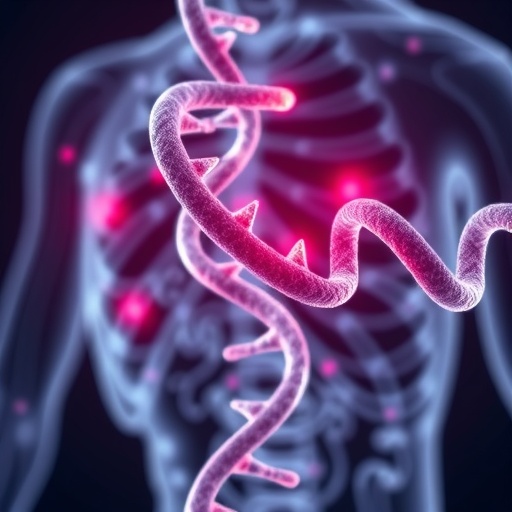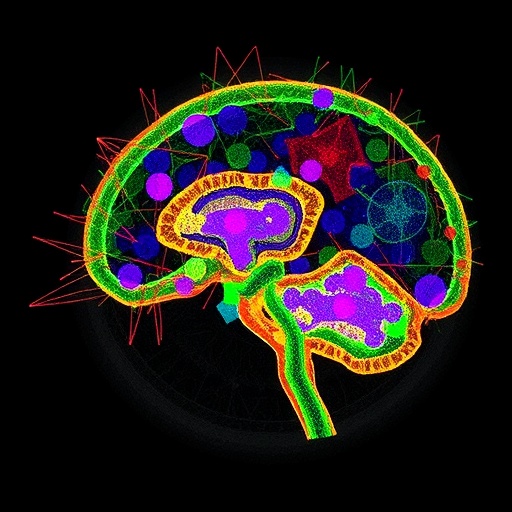In the dynamic landscape of medical research, a groundbreaking study has emerged, highlighting the promising future of gene therapies aimed at treating muscle-wasting diseases. Herring and Rodgers, in their recent publication, shed light on avgn7.2, a novel gene therapeutic specifically designed for inclusion body myositis (IBM) and other similar disorders. This research marks a pivotal advance in the therapeutic strategies available for muscle-related diseases, particularly in understanding the toxicological implications that may accompany such treatments.
Gene therapies have opened up new avenues for addressing serious medical conditions that were once thought to be incurable. Inclusion body myositis, a progressive muscle disorder characterized by muscle weakness and atrophy, can severely impact the quality of life of those affected. Current treatments are limited, often focusing on symptom management rather than addressing the underlying causes of the disease. This new therapeutic approach, avgn7.2, aims to alter the genetic mechanisms that contribute to muscle degeneration, representing a significant shift in how these diseases can be tackled.
The initial stages of research for avgn7.2 involved extensive investigations into its mechanism of action. Researchers sought to understand how this gene therapy could potentially reverse the muscle degradation seen in diseases like IBM. The preliminary findings indicated that avgn7.2 works by enhancing the expression of certain proteins that are crucial for muscle health and repair. By boosting these proteins, the therapy aims to not only slow down the progression of the disease but also restore some muscle function.
Murine models, which closely mimic human muscle conditions, were utilized to test the efficacy and safety of avgn7.2. Herring and Rodgers conducted a comprehensive toxicology assessment to gauge how the therapy interacts with various body systems. This step is critical in the development of any new treatment, as it evaluates the potential risks and side effects associated with the gene therapeutic. In these trials, while evaluating signs of toxicity, the researchers carefully monitored indicators such as muscle health, immune response, and overall biological compatibility.
The results of the murine toxicology assessment were promising. Researchers found that avgn7.2 had minimal adverse effects on the test subjects, which is a significant milestone in the development of gene therapies. These findings suggest that the therapy can be administered safely, making it a viable candidate for further clinical trials in humans. The assessment not only highlighted the therapeutic potential of avgn7.2 but also provided critical insights into the long-term implications of its use.
As researchers delved deeper into the molecular impact of avgn7.2, they uncovered how the gene therapy modulates biological pathways associated with muscle regeneration. The therapy seems to activate dormant muscle stem cells, essential for tissue repair and muscle growth. By jumpstarting these cellular processes, avgn7.2 paves the way for enhanced muscle recovery and potentially reverses damage caused by diseases like IBM.
The promise of avgn7.2 extends beyond inclusion body myositis, as similar gene therapies have implications for a variety of muscle-wasting disorders. Such treatments could revolutionize the landscape of muscular dystrophies and other related conditions, where traditional therapies have fallen short. This versatility could lead to a broader acceptance of gene therapies in clinical practice, significantly changing patient prognoses for a wide spectrum of muscular ailments.
Another important aspect of the study was the consideration of ethical and regulatory frameworks governing gene therapies. As the field advances, researchers emphasize the necessity for rigorous ethical guidelines to oversee the application of such experimental treatments. There is a need for transparent communication regarding the risks and benefits of gene therapies, especially as they transition from laboratory research to clinical application. This ensures that patients and healthcare providers can make informed decisions surrounding new treatment options.
The enthusiasm surrounding avgn7.2 and its applications has sparked discussions within the scientific community and beyond. Experts are calling for more robust funding and support for such innovative research, particularly as the stakes rise in developing cures for debilitating diseases. Advocates for muscular health stress that continued exploration of gene therapies like avgn7.2 could lead to breakthroughs that fundamentally alter our approach to muscle disorders.
Meanwhile, public interest in gene therapies is amplifying as stories of hope and recovery circulate among patient advocates and affected communities. These narratives humanize the scientific research, highlighting the profound impact that successful treatments could have on individuals living with debilitating conditions. For many, avgn7.2 embodies the hope of a future where muscle-wasting diseases can be treated effectively, transforming lives in the process.
As the research progresses towards human clinical trials, many are watching closely for the outcomes of future studies. The path to approval for new gene therapies can be arduous, often requiring years of research and testing to ensure safety and efficacy. Yet, the momentum generated by the initial findings of avgn7.2 cannot be overlooked. If the upcoming phases are successful, we may well see avgn7.2 introduced into clinical practice, offering renewed hope to thousands of individuals living with muscle-wasting diseases.
In conclusion, the findings shared by Herring and Rodgers represent a new chapter in the treatment of inclusion body myositis and similar disorders. The murine toxicology assessment of avgn7.2 not only highlights its potential safety but also underscores the importance of innovative therapeutic strategies in combating muscle degenerative diseases. As research continues and the clinical landscape evolves, avgn7.2 stands out as a beacon of hope for patients and researchers alike, promising a brighter, healthier future.
Subject of Research: Gene therapy for inclusion body myositis and muscle-wasting diseases.
Article Title: Murine toxicology assessment of avgn7.2, a novel gene therapeutic for inclusion body myositis and other muscle wasting diseases.
Article References:
Herring, S.K., Rodgers, B.D. Murine toxicology assessment of avgn7.2, a novel gene therapeutic for inclusion body myositis and other muscle wasting diseases.
Gene Ther (2025). https://doi.org/10.1038/s41434-025-00578-x
Image Credits: AI Generated
DOI: 10.1038/s41434-025-00578-x
Keywords: gene therapy, inclusion body myositis, muscle wasting, avgn7.2, murine model, toxicology assessment.
Tags: addressing underlying causes of muscle diseasesavgn7.2 gene therapeuticgene therapy for muscle wastinggenetic mechanisms of muscle atrophyinclusion body myositis treatmentinnovative medical researchmuscle degeneration researchnovel therapies for muscle disordersprogressive muscle disordersquality of life in muscle-wasting conditionstherapeutic strategies for muscle-related diseasestoxicological implications of gene therapy





